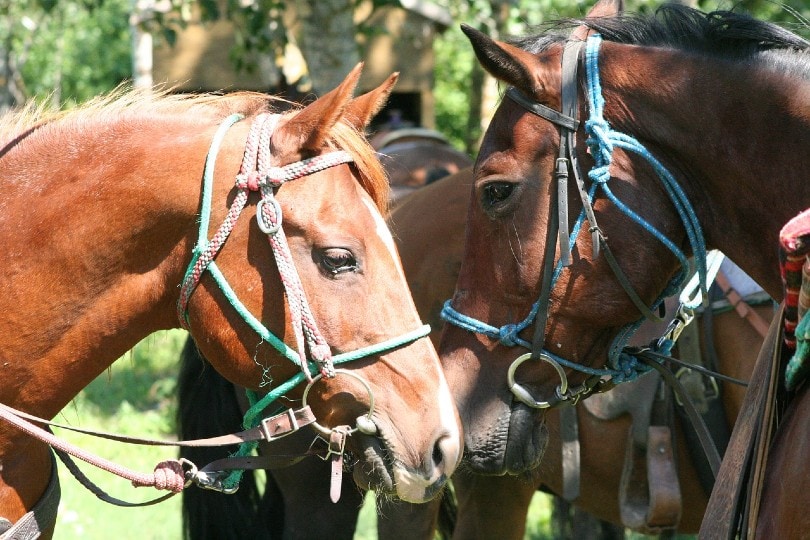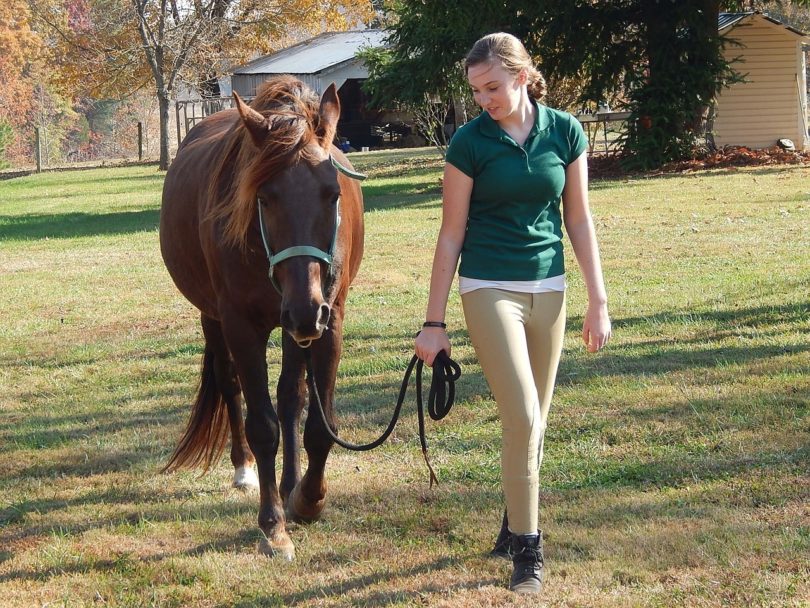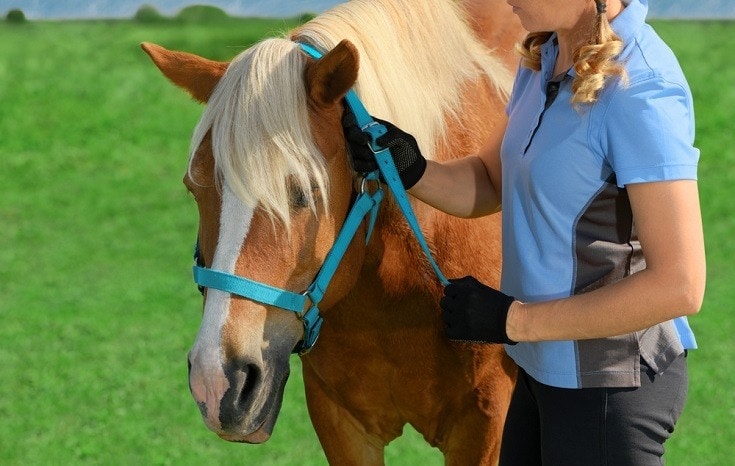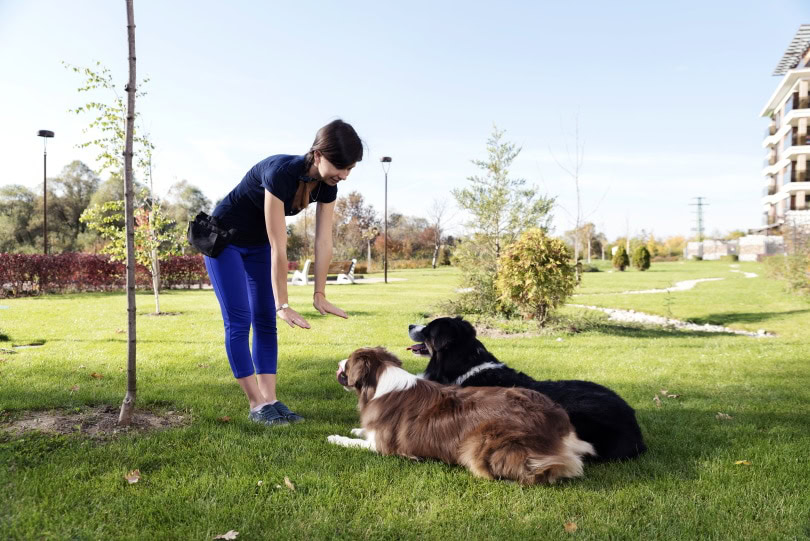In order for your horse to be truly safe for people to be around, it must be properly halter broken. It’s a process that almost all domesticated horses go through. Until a horse is halter broken, you can’t ride it and you won’t be able to safely lead it around. But halter breaking isn’t a difficult task. Every horse can be halter broken if you follow the steps we’re about to outline for you.

What Does It Mean to Halter Break a Horse?
A halter broken horse is comfortable wearing a halter and able to respond to different cues. If the horse is properly halter broken, it will be able to move its head in any direction based simply on cues. Halter breaking is the process of getting the horse comfortable with the halter and teaching them to respond to the cues.
How to Know if Your Horse Is Halter Broken
The goal of halter breaking is to train the horse to respond to movement cues 100% of the time without fail. You’ll know your horse is truly halter broken when it’s able to properly respond to every cue without ever missing one.
When Should a Horse Be Halter Broken?
Ideally, horses should begin wearing a halter within a few days of birth so they can get comfortable with it. They should be halter broken as foals if at all possible. Adult horses can still be halter broken, but it’s going to take much longer and it will be much harder to accomplish.

How to Halter Break a Horse

You’ll need to continue repeating each of the following exercises until you’re confident the horse responds to the cue every single time. Once you manage this for moving in one direction, then you can move on to training in a different direction and cue.
Moving Left
Stand to the left of your horse facing the same direction it’s facing. Apply pressure to the left side of the halter like you’re attempting to lead the horse left. Continue this pressure until the horse moves its head to the left. Then you can release.
Moving Right
The process for moving right is the same as for moving left, except you’ll be standing on the right side of your horse and applying pressure as if you were trying to lead the horse to the right.
Moving Forward
With the lead rope directly beneath your horse’s chin, gently pull forward. Maintain consistent pressure until the horse takes a step forward. As soon as it does you must release the pressure.
Moving Backward
This is the exact opposite of teaching the horse to move forward. Begin with the lead rope under your horse’s chin. Apply pressure back towards the chest and keep holding until the horse steps backward, at which point you can release the pressure.
Lowering Head
With your hands on the top of your horse’s head, gently apply pressure downward, but don’t push hard. Continue applying this gentle pressure until your horse lowers its head.
Lifting Head
Put your hand palm up under your horse’s head where the neck and head meet. Gently press up until the horse’s head raises.

One Tip for Better Training
You might find that your horse doesn’t want to respond. It’s possible your horse even does the opposite of what you want, moving in the wrong direction. If this happens, don’t panic. Simply continue to apply pressure until the horse does what you want. This will require plenty of patience, so don’t give in. If you do, you’ll have a very difficult time getting your horse to move the way you’re asking.

Final Thoughts
Halter breaking a horse isn’t terribly difficult, but it can be time-consuming and it will take a great deal of patience on your part. It’s essential for any domesticated horse, and the earlier you can do it in the horse’s life, the better. Ideally, you’ll want to halter break them as foals, but adults can still be halter broken, even if it is a bit harder to achieve.
- Related Read: Can Horses See In The Dark?
Featured Image Credit: IRINA ORLOVA, Shutterstock










